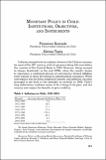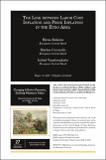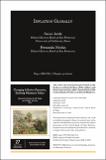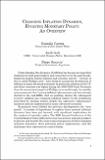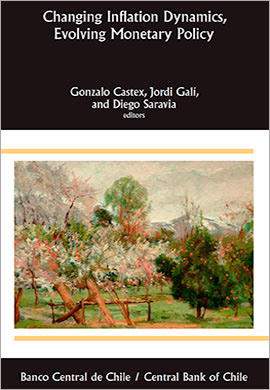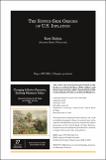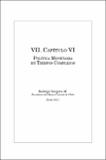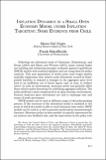Buscar
Mostrando ítems 31-40 de 81
Monetary policy in Chile: institutions objectives and instruments
Inflation seemed to be an endemic disease of the Chilean economy for most of the 20th century with its presence being felt even before the creation of the Central Bank in 1925. However things seemed to change drastically in the mid 1990s when the country began to experience a sustained process of ...
The link between labor cost inflation and price inflation in the Euro Area
To gauge inflationary pressures, policymakers generally pay close
attention to labor cost developments. A key reason has been the widely
held view that labor cost inflation (i.e., wage inflation adjusted for
productivity developments) is one of the main causes of price inflation.
From a theoretical ...
Inflation globally
The fortunes of the Phillips curve have ebbed and flowed ever
since it was proposed by Phillips (1958). Although its origins are
primarily as an empirical regularity, there is now a vast literature
that provides more formal justification. In recent times, the Great
Moderation and the modern era ...
Changing inflation dynamics, evolving monetary policy: an overview
Understanding the dynamics of inflation has become an important
challenge for both policymakers and researchers over the past decade.
Empirical models linking inflation and economic activity—versions of
the so-called Phillips curve—have failed to account for the behavior of
inflation in many ...
Changing inflation dynamics, evolving monetary policy
Empirical models have failed to explain inflation behavior over the last 20 years in most developed economies. The unusual inflation dynamics—the ‘missing deflation’ during recessions and the ‘missing inflation’ during recoveries—points to a failure of Phillips curve predictions. Several hypotheses ...
The supply-side origins of U.S. inflation
In recent years, we have not seen much of a negative correlation
between inflation, the time series plotted in figure 1, and measures of
resource slack, based on real GDP plotted in figure 2. This flattening
of the Phillips curve in many countries across the world has startled
monetary policymakers. ...
Comfort in floating: taking stock of twenty years of freely floating exchange rate in Chile
Chile offers an example of a country that has overcome the fear of floating by reducing balance-sheet mismatches; enhancing financial-market development; and improving monetary, fiscal, and political institutions; while strengthening policy credibility. Under the floating regime, Chile’s economic ...
Política monetaria en tiempos complejos
Durante los últimos años la economía chilena ha sufrido shocks importantes que han implicado un gran desafío para la conducción de la política monetaria. El fin del súper ciclo de las materias primas y condiciones financieras internacionales más estrechas junto con una caída importante en los niveles ...
Inflation dynamics in a small open economy model under inflation targeting: some evidence from Chile
Following the influential work of Christiano, Eichenbaum, and Evans (2005) and Smets and Wouters (2003), many central banks are building and estimating dynamic stochastic general equilibrium (DSGE) models with nominal rigidities and are using them for policy analysis. This new generation of sticky ...
Inflation targeting in financially stable economies: has it been flexible enough?
The international financial crisis and Great Recession of 2008- 09 called for a range of significant policy measures by central banks beyond aggressive interest rate cuts. Measures have ranged from improving international coordination to purchasing local private loan portfolios and direct intervention ...

